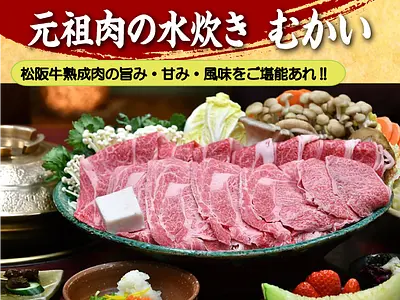[Beautiful Country of Mie Bicycle Route: TsuCity Misugi Edition] Crossing the fresh green hills and visiting the post stations on the Ise Honkaido Road
掲載日:2019.06.05
Misugi is located at the westernmost tip of Tsu, the capital of Mie Prefecture. It is an area rich in nature, with lush forests that turn bright green during the fresh green season, and kumozu flowing through the town.The air is clean and there is little traffic, making it the perfect field for cycling. is. This time, we will introduce recommended courses where you can fully enjoy the charm of Misugi and have a moderately rewarding ride!
Bicycle writer Masanori Asano, born and raised in Mie Prefecture, will introduce you to the charms of Mie Prefecture while cycling!
■Traveler bicycle writer Masanori Asano
I have been cycling for about 20 years. I love cycling as much as I love three meals and snacks. Because of his love for bicycles, he became a freelance bicycle writer. He rides his bicycle for work, and also enjoys racing and long rides in his private life.
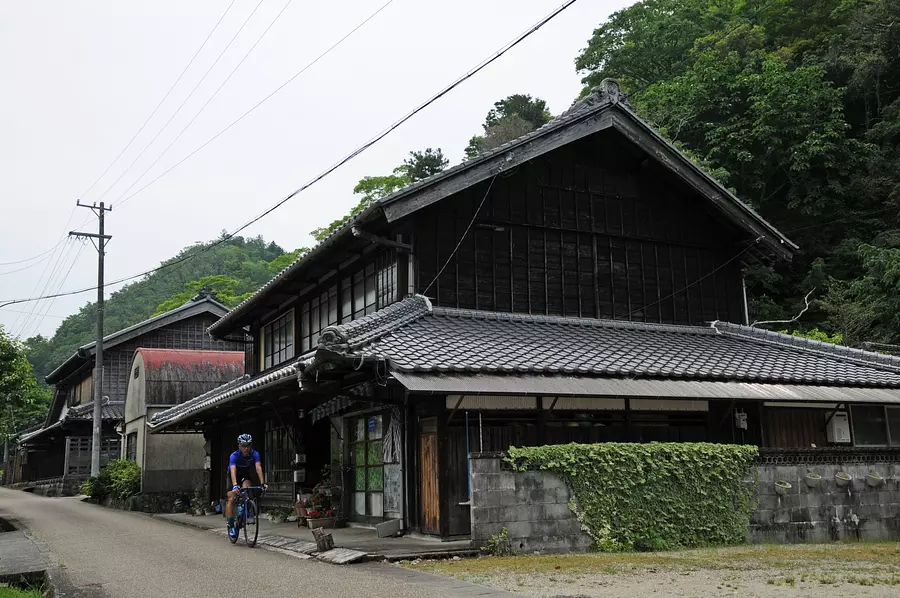
It is an area rich in nature, with lush forests that turn bright green during the fresh green season, and kumozu threading its way through the town.The air is clean, there is little traffic, and cycling is a great option. It's a great field to have fun with.
In addition, there are many sights to see and photogenic spots, such as the Ise Honkaido Road that connects Osaka and Ise, and its post towns, which retain traces of the past!
This time, we will introduce recommended courses where you can fully enjoy the charm of Misugi and have a moderately rewarding ride!
Course: Misugi TsuCity Tsu City
Mileage: 43.1km
Difficulty: ★★★☆☆
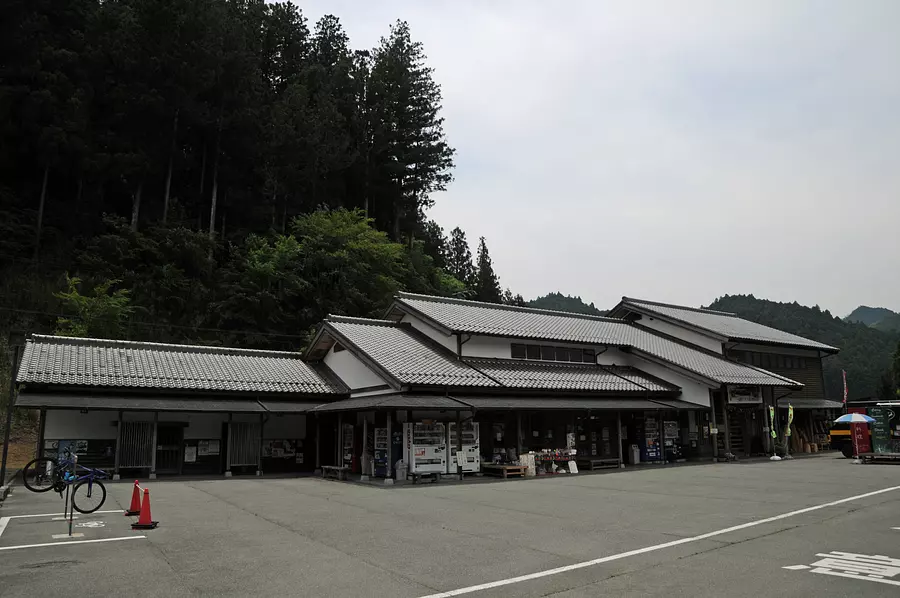
◆ Michi-no-eki Misugi
No matter what I say, I am from TsuCity Mie Prefecture, and I love Tsu very much.
The courses I'll be introducing this time are some of the courses I often run for training and cycling. Misugi's biggest appeal for cyclists is that there is little traffic and it is easy to ride.
What's more, it's rich in nature, the scenery is beautiful, and it's soothing to run around. Many of the courses run along rivers or through forests, and are at high altitudes, so the good thing about this is that you can run in a cool climate this coming season.
This time's course is a loop course with a total length of about 43 km, starting and ending at Michi-no-eki Misugi. If you plan to cycle, we recommend starting and stopping at Ise Okutsu, Ise Kamakura, and Ise Yachi stations on the JR Meisho Line.
Misugi Michi-no-eki is located along National Route 368 in Kamitaki. Kitabatake-JinjaShrine is known as a famous spot for autumn leaves, is also nearby. The area around Michi-no-eki is surrounded by mountains, and the air feels delicious. Furthermore, the temperature feels a little cooler compared to TsuCity. This time, I'm the self-proclaimed sunny guy and I'm the only one doing the interview. It looks like it's going to be a great day for cycling!
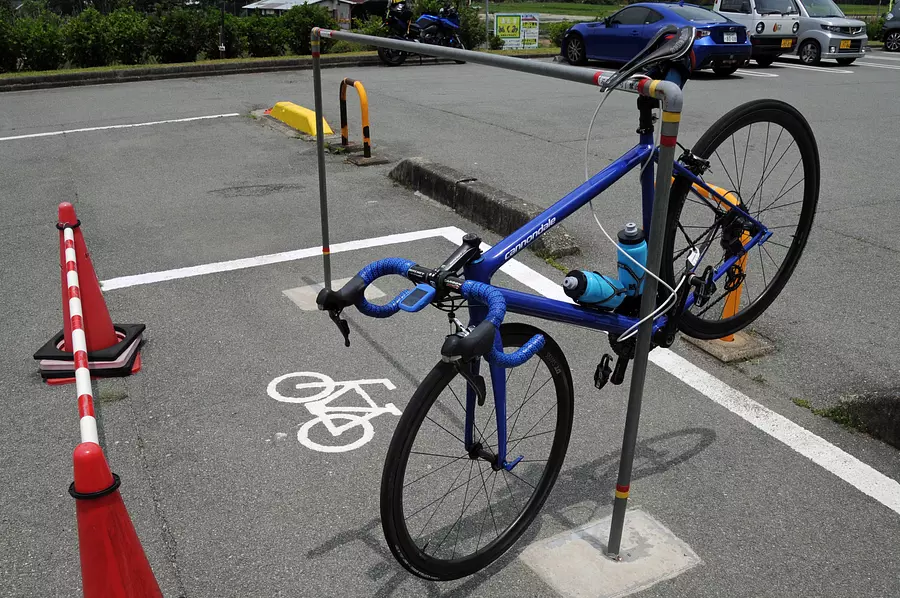
Replenishing drinks and water is not a problem as there are vending machines all along the course, but there are also a few points where you can replenish food. So, I hung my bike on the bike rack in the parking space, tightened the lock, and headed to Michi-no-eki!
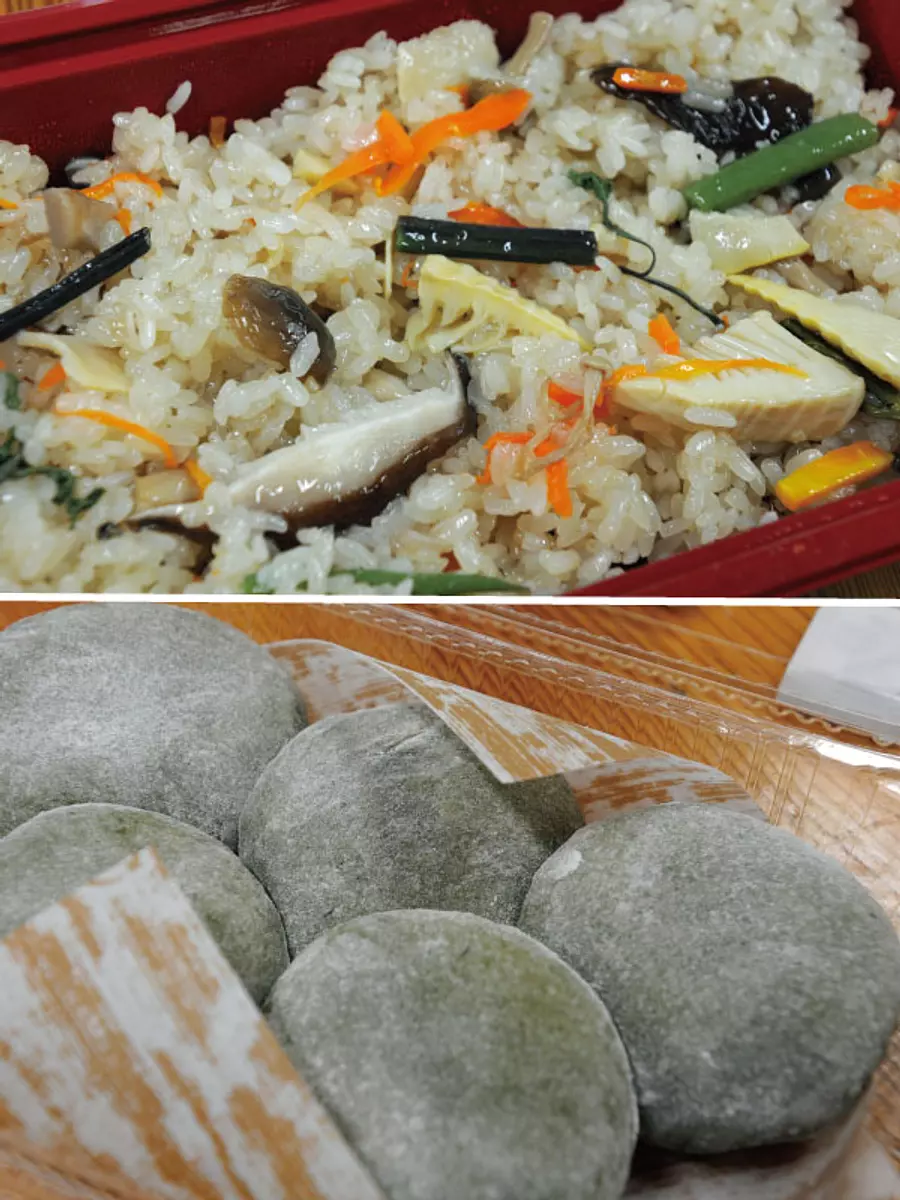
When I asked the people at Michi-no-eki for recommendations, they recommended wild vegetable rice rice made with rice and wild vegetables grown in TsuCity, and mugwort mochi made with mochi rice and mugwort also grown in TsuCity. Ta.
The wild vegetable okowa had a light seasoning that brought out the flavors of the ingredients such as bamboo shoots and zenmai, making it really flavorful, and it was simple yet extremely delicious!
Furthermore, the mugwort mochi that I received after the meal was very soft, and with each bite, the refreshing aroma of mugwort and the sweetness of the bean paste spread in my mouth, making it a truly ``mouth-pleasing'' experience.
In the bento box, we also had seasonal amago takikomi rice. I'm a big foodie and would like to visit and eat there again soon.
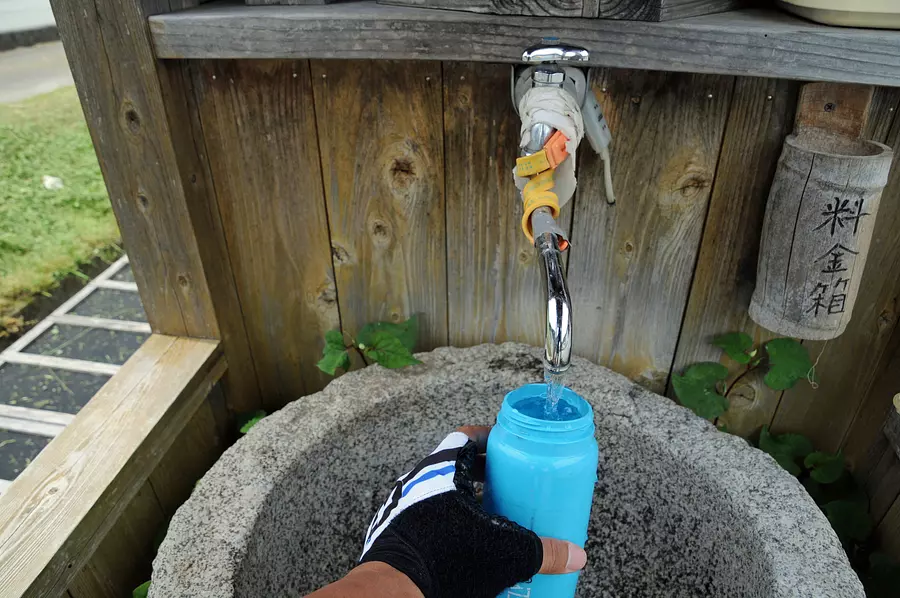
Now that you're full of energy, let's get started.
When you exit Michi-no-eki and exit onto National Route 368, turn left and head toward Ise-Okutsu. Immediately after exiting the national highway, I saw a handwritten sign for ``Natural Water'' on my right. If you're interested, let's stop by.
According to the explanation on the signboard, this natural water was pumped on the premises of ``Shun no Restaurant Misugi,'' which is located across the street from Michi-no-eki. It is free to drink on the spot, but there is a charge if you put it in a bottle or plastic tank.
When you drink it, it has no taste and is very delicious! So I decided to put it in a bottle and take it with me. Just put money in the provided fare box (10 yen per bottle), refill the bottle with water, and you're ready to go!
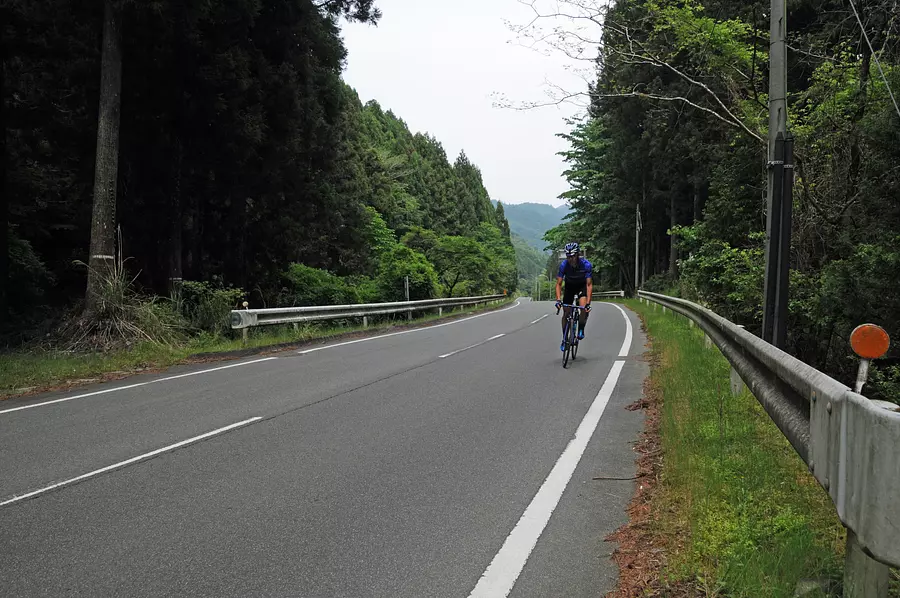
However, it's only about 1km from the Kamitaki signalized intersection to the peak tunnel, so it's not that long. The first 200m is a gentle climb, followed by a 200m steep climb → 150m middle break → 150m hard climb → 100m middle break → 200m final steep climb...and so on, with alternating steep ascents and gentle slopes. This is the so-called 3-tiered slope that appears in .
So I will teach you the strategy for this climb! After leaving Michi-no-eki, wait in a safe place and wait for the traffic light to turn red. After that, when the traffic light turns red, confirm safety and start. Once you gain momentum on the way down and start going up, it gets a little easier. At this time, if you are not confident in your leg strength, it is perfect to shift the front gear to the inner (smaller one on the inside) and make the rear gear a little heavier before you start climbing!
As you approach the climb, shift to a lighter gear as soon as possible before the gear feels too heavy.
Another important thing is not to try too hard as you are just getting started! It doesn't matter if it takes a while, so go up slowly while turning the light gear.
...See, you were able to get up there so easily, right?
The Kaisaka Tunnel ahead is about 700m long and has a gentle uphill slope halfway through. There are lights in the center, but it's dark, so turn on your lights and ride safely.
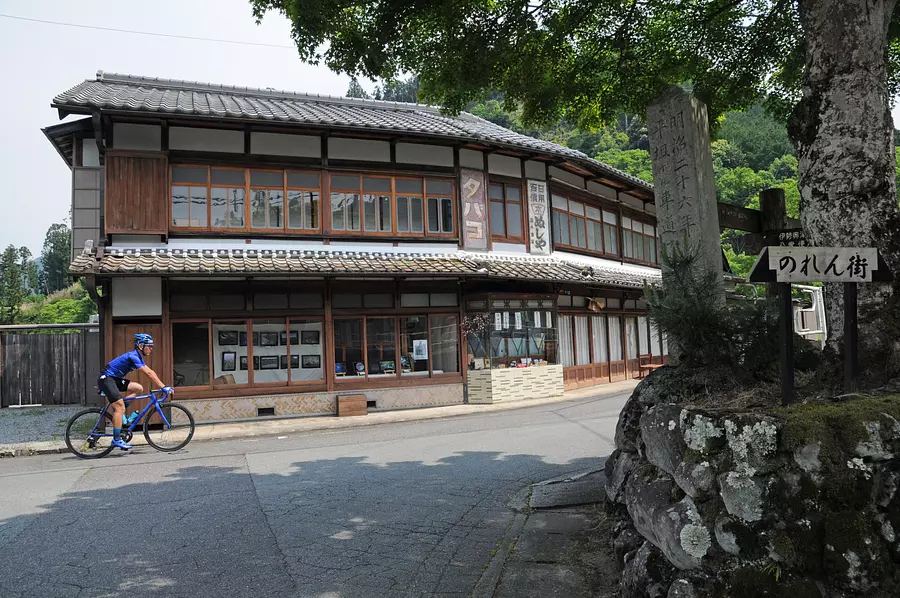
◆ Okutsu Inn
Once you pass through the Kaisaka tunnel, an exhilarating descent awaits you!
It's no exaggeration to say that this is a reward that only cyclists who climb with their own legs can enjoy!
However, the slope is quite steep and there are some sharp turns until you reach the bottom, so be careful not to go too fast.
After passing the Okutsu intersection and the signalized intersection ahead, a branch will appear diagonally to the left. If you turn left at this fork, you will reach Okutsu-juku, which was once on the Okuise Honkaido Road. Old houses with lattice doors still remain here and there, and the front of each house is decorated with lanterns and hanging curtains with the former name of the house.
``Nushiya'' in front of the station used to be a store that sold daily necessities and cigarettes, and the retro signboard gives it a nice feel. This town has a real history that is not made up. It's fun to explore while remembering the bustle of yesteryear.
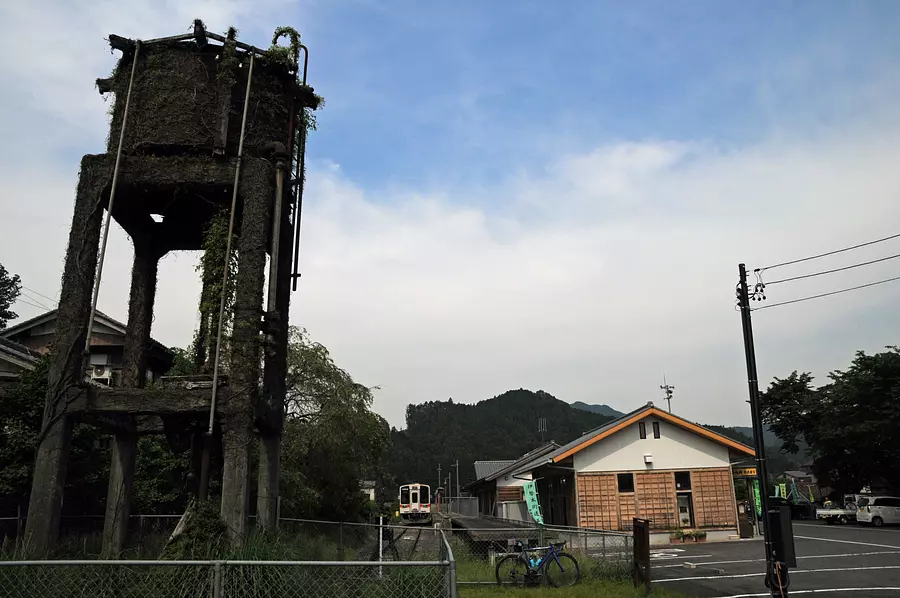
After enjoying a walk around the post town of Okutsu, head to Ise-Okutsu Station, the last station on the Meimatsu Line.
There is a parking lot on the west side of the platform, indicating that it is the final station. To the west of the parking lot, there is also a water tower, a remnant from the days when steam locomotives ran in this area, which has become the symbol of the station.
This is truly a railway heritage from the Showa era. I hear that many railway enthusiasts from outside the prefecture visit Ise-Okutsu Station, which makes sense.
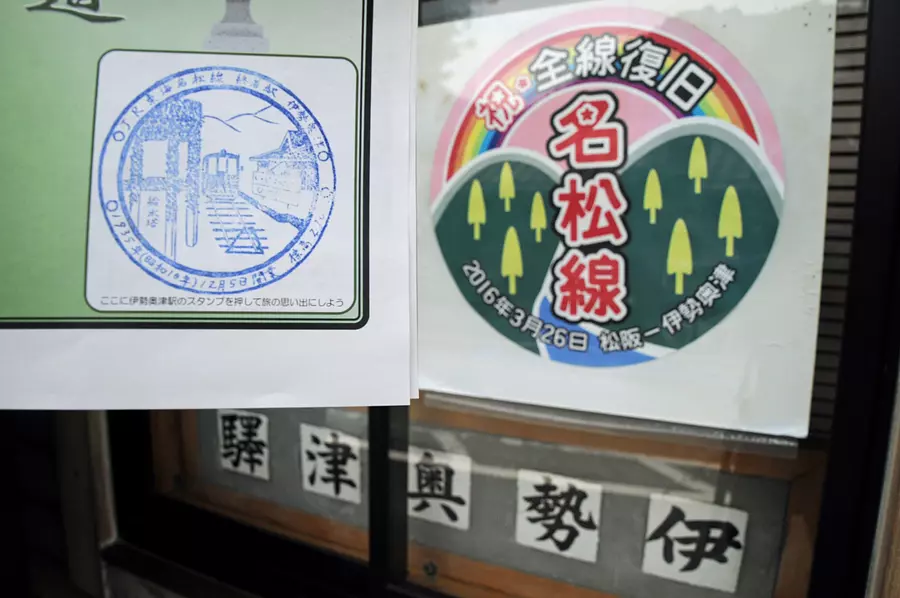
There was a space to stamp on the "Ise Honkaido/Okutsu-juku Map" which was distributed free of charge at the station, so I decided to stamp it there and take it home as a souvenir.
As I was about to leave, I was approached by a little train enthusiast from Osaka.
"Where did you come from? Did you ride a bicycle? Don't you take the train?" I was bombarded with questions.
This time I didn't have Mr. Murakami with me on the trip, so I was alone on the journey, so the opportunity to talk with someone is valuable. Both now and in the past, stations and post stations are places where flows of people intersect. According to his father, the little boy is learning to ride his bicycle without the training wheels.
I told them, ``Keep practicing hard,'' and I left the station, trying to be smarter than usual.
I was hoping that the cyclist I met at the station today would get interested in cycling as well.
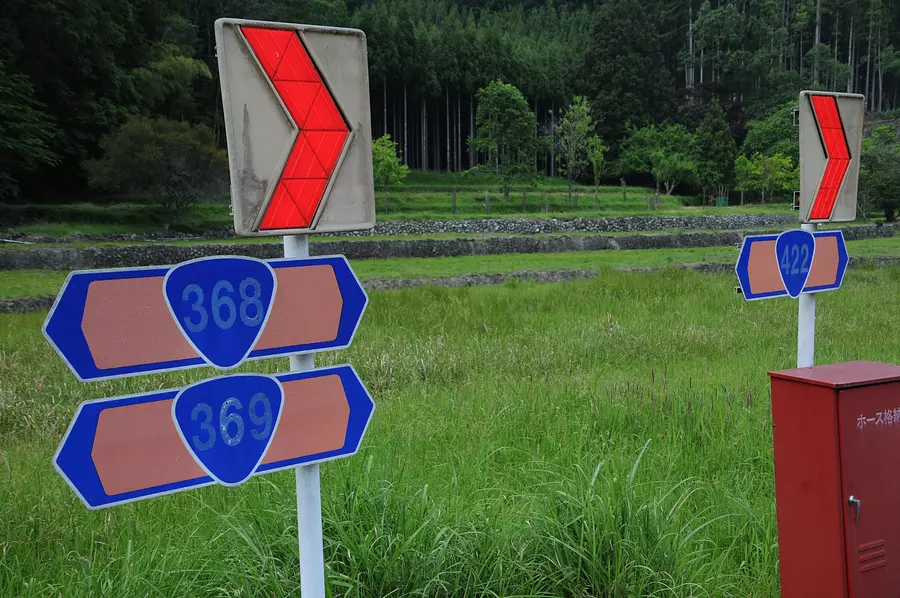
◆ Okutsu - Osaka Pass - Ise Yachi
Exit Ise-Okutsu Station and return to the national highway.
When you look at the crossroads/route number sign in front of you, you will notice that there are three types of route numbers for national highways. In fact, National Route 368 overlaps with National Routes 369 and 422 in this area.
A section where three national highways overlap is rare even in Japan, and signs often only display the one with the lowest national highway number.
However, here there are crossroads and route number signs for all three national highways! It was a small story that would be of interest to those who are interested.
Head toward Mitsue on the national highway where three routes overlap.
If you go west on a road that has ups and downs, you will cross a fine road with one lane on each side and a central line after about 2 km. If you turn right at this intersection, you will begin the ascent to Osaka Pass. The distance to the peak of Osaka Pass is less than 2 km, and the course profile begins by climbing a short two-step slope with a maximum gradient of about 10%, then descending for a while before gently ascending another slope.
It's not long by any means, but it's not short enough that you can't climb up with all your might, so if you enjoy cycling, we recommend choosing a light gear and twirling your legs as you ascend.
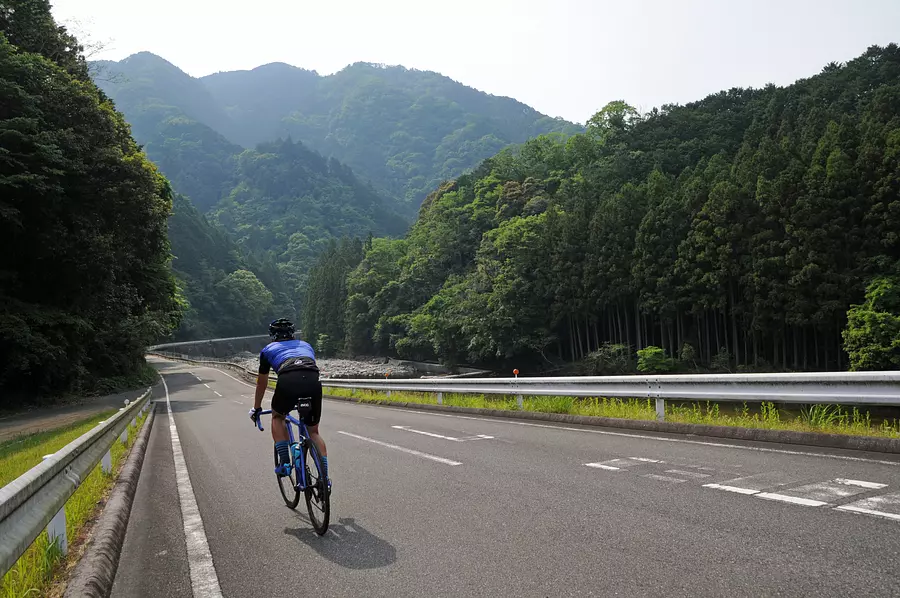
Continue along Prefectural Route 667 for a while. As you enter Yachi, kumozu will appear on your right. Drive along the river while looking at MisugiResort which has a hot spring, pool, and hotel, on your right, then turn right just before the tunnel and follow the old road.
If you continue straight ahead at the junction with the national highway, you will be able to ride along the cool and pleasant old road in the shade of trees along kumozu. This road is recommended as it is cool even in the summer!
When you look back, the mountain range is beautiful, and in the fall, the leaves of these mountains turn red, giving it an even more atmospheric feel. There is very little traffic, so it's a good place to take a break.
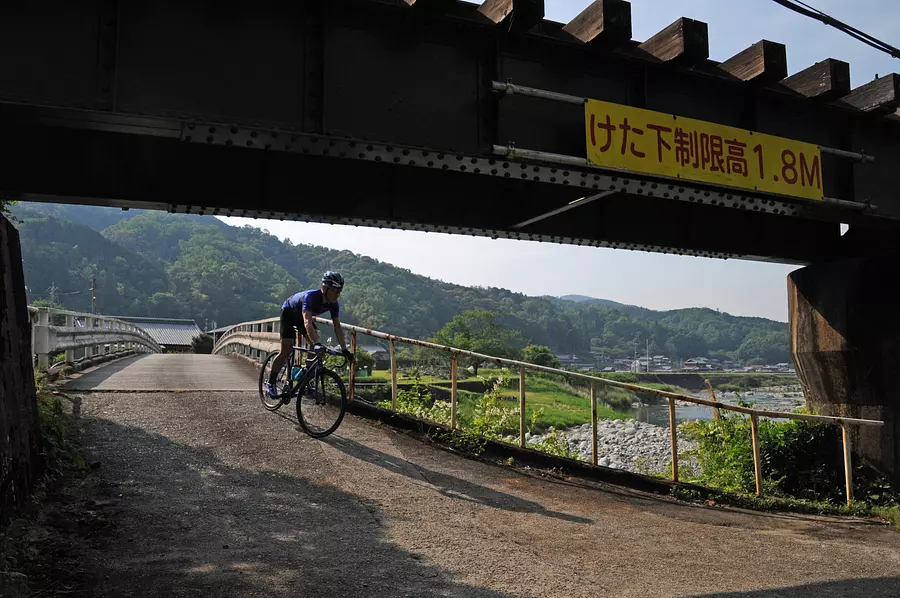
If you turn right at an intersection with no traffic lights near the Takehara Community Center, there is a point where you pass under the elevated JR Meimatsu Line, but the height under the girder is only 1.8m!
The first time you go through it, you may be nervous about whether you can pass through it properly, but unless you are very tall, you should be fine as long as you don't stand on your bike with your hips lifted off the saddle!
If your timing is good, you might be able to pass under the overpass just as the train is passing.
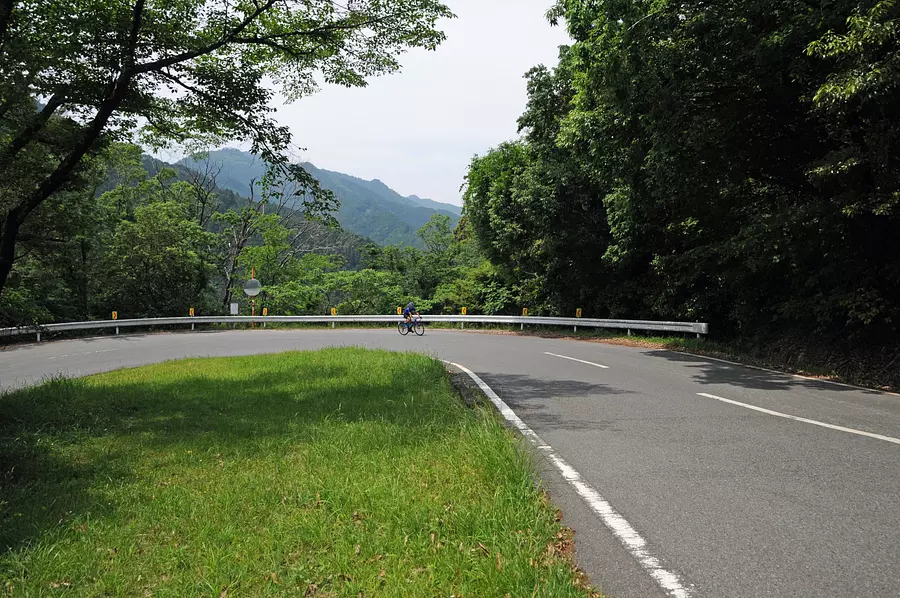
Go through the alley and turn right when you reach Prefectural Route 29. From here it is about 1.5km uphill to Kimigano Dam.
There is a fairly steep climb at the beginning, then two hairpin bends while going up a gentle slope, and a slightly steep slope at the end. It's not a race, so you don't have to go up fast here either.
Go at your own pace while spinning the light gears! From the second hairpin bend, you can see the mountains in the distance.
Moreover, the fresh greenery is beautiful around here! Let's climb slowly and enjoy the scenery.
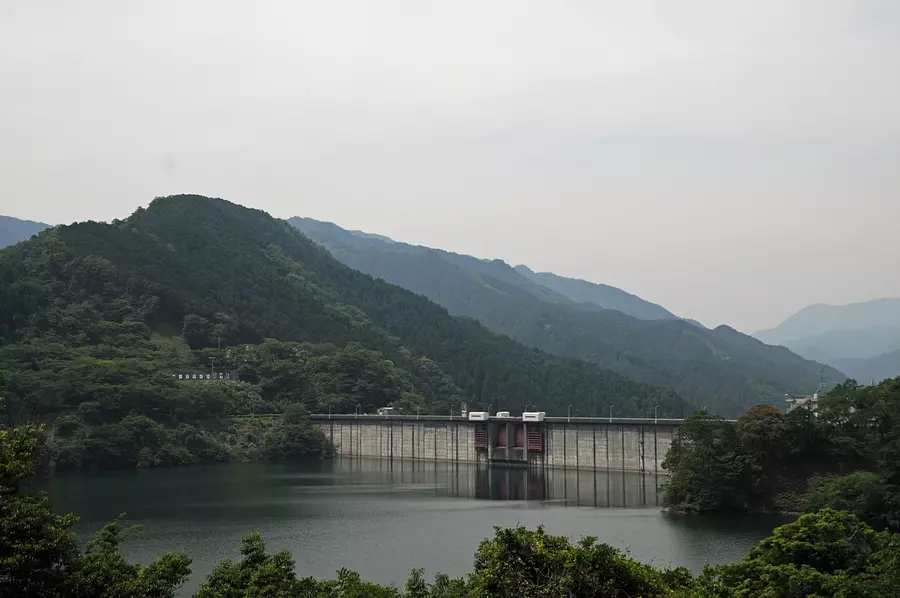
There is also Kimigano Dam Lake upstream of the dam, and the lakeshore is known as a famous spot for cherry blossoms and autumn leaves. I used to cycle here every year during the cherry blossom and autumn foliage seasons.
At the time of the interview, the fresh greenery was visible and I like this time of year as well. You can also ride a bicycle across the dam, so let's take a look.
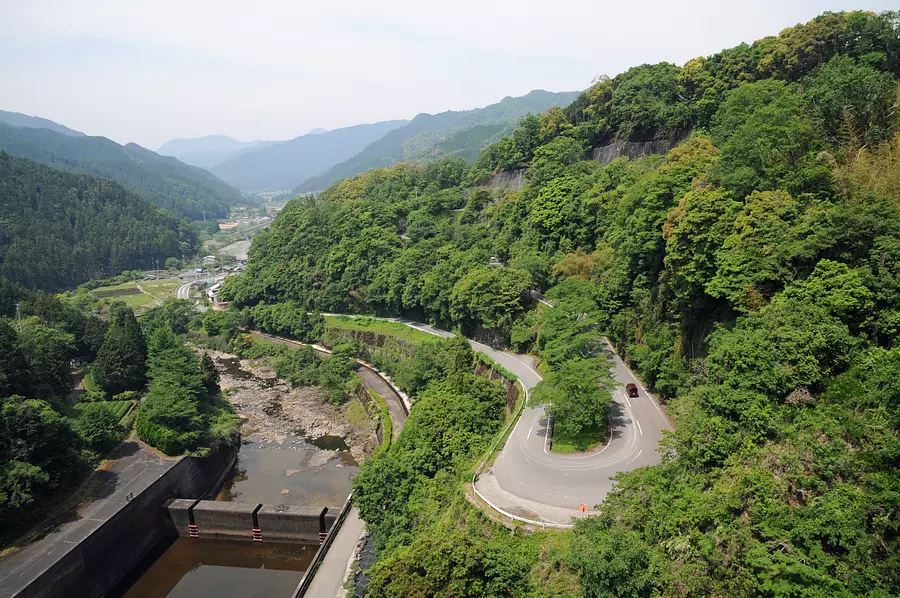
You can see the road you just came up on, and the car that is running around the first hairpin curve looks very small! Please immerse yourself in the feeling of ``I climbed this high!''
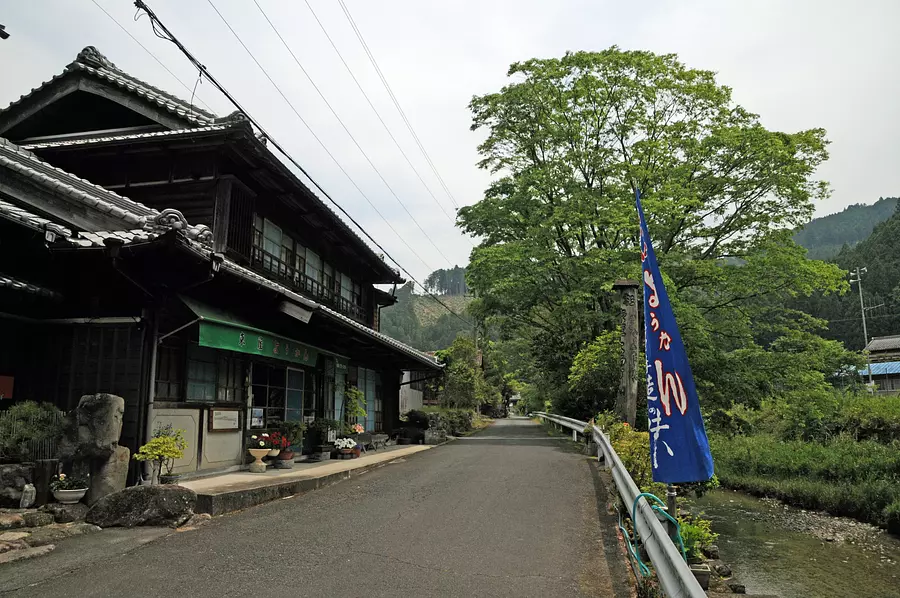
Passing Kimigano Dam Lake, head south along the Hatemata River downstream.
Passing Kitabatake-JinjaShrine, a famous spot for autumn leaves, and going further, it intersects with the Old Ise Honkaido Road. The landmark is a splendid night light made of stone.
This area is the ruins of a post station called Taki-juku. Near the nightlight, there is a building that was once an inn that still retains some vestiges of the past. Proceeding east along the road, there are still some old houses left, and there are lanterns in front of the eaves indicating their former names.
As I leisurely explored the area, feeling like someone who traveled along the highway long ago, I came across a quaint building on the outskirts of town.
There is also a ``Yokan'' banner in front of the building. Azumaya is a long-established yokan shop that has been around since the Meiji era. I'm hungry after climbing so much, so let's take a break.
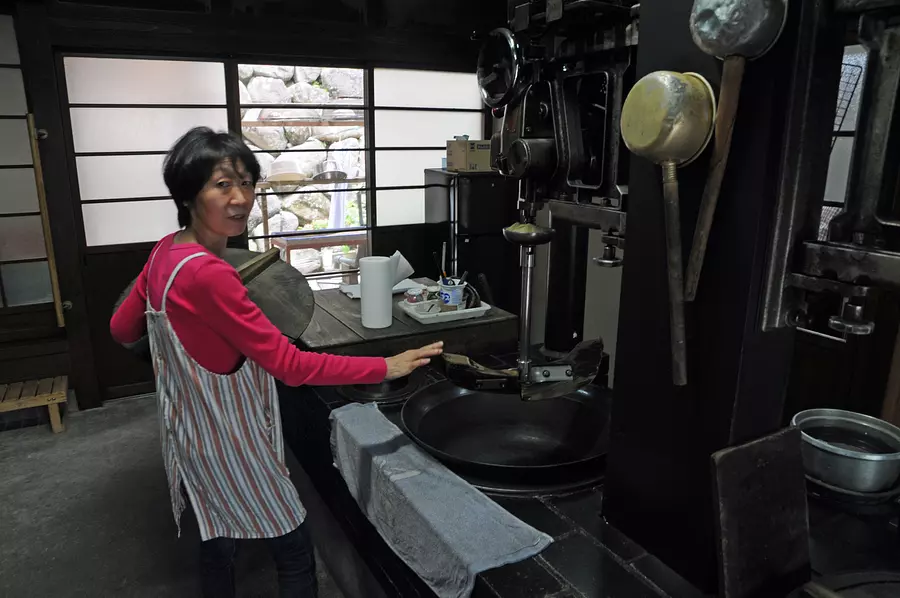
This is Takako Tsujii, the fourth generation. When I told them that I had come by bicycle and that I was reporting on the area, Ms. Tsujii's mother, Yasuyo Nakagawa, also showed up.
Currently, the store is managed by the father and son.
"Would you like to take a look at the kitchen? I'm taking a break from making yokan today," Tsujii said.
This is a valuable opportunity, so I would like to show it to you. There is an old-fashioned stove in the center of the kitchen, and it is said that they use firewood instead of gas to cook the quail beans and boil down the bean paste. The walls and stove in the kitchen are all blackish because they were naturally sooted by the firewood.
``My daughter is the fourth generation of our family, and we have been making yokan for generations.Basically, the method of making yokan has not changed since ancient times, and everything from straining the quail beans to straining the bean paste is all done by hand.It is quite hard work for women, but... There are many people who love this simple taste, so I would like to continue using it as long as I can,'' says Nakagawa.
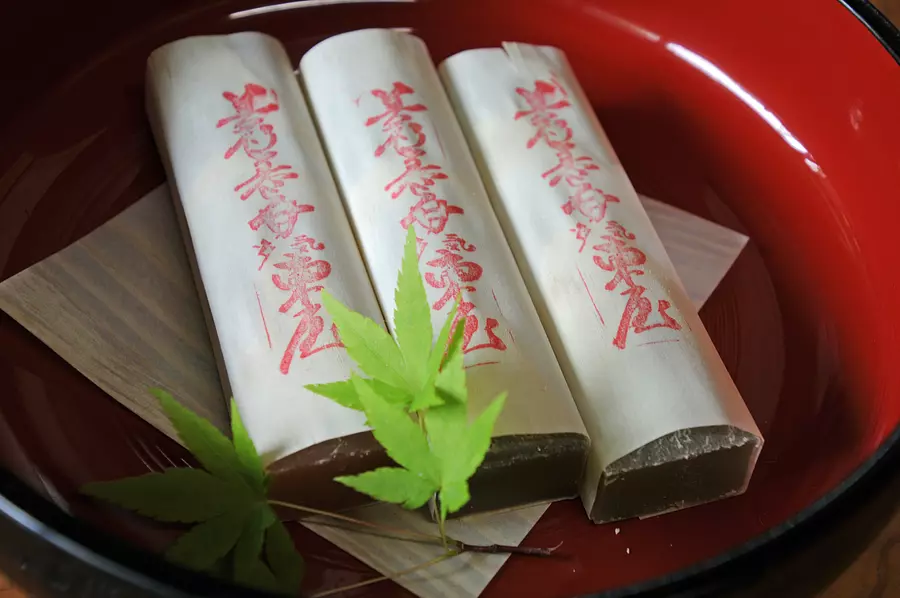
There are two flavors: regular green yokan and light orange yuzu flavor.
There is a space inside the store where you can relax, but on the day of the interview, I felt the breeze caressing the river surface, so I went outside, sat on the wooden bench in front of the store, and enjoyed one of each of the two flavors of yokan. I'll enjoy having this. Both are moderately sweet, and the yuzu one has a refreshing yuzu scent that is a nice accent.
``Our Yokan is really simple and doesn't look good in photos, so we don't have many young female customers (lol).People on bicycles and motorbikes often come from far away,'' says Tsujii.
Yokan can be purchased at Michi-no-eki Misugi, but I highly recommend purchasing it at the store and enjoying the chat with Mr. Nakagawa and Mr. Tsujii while you eat it!
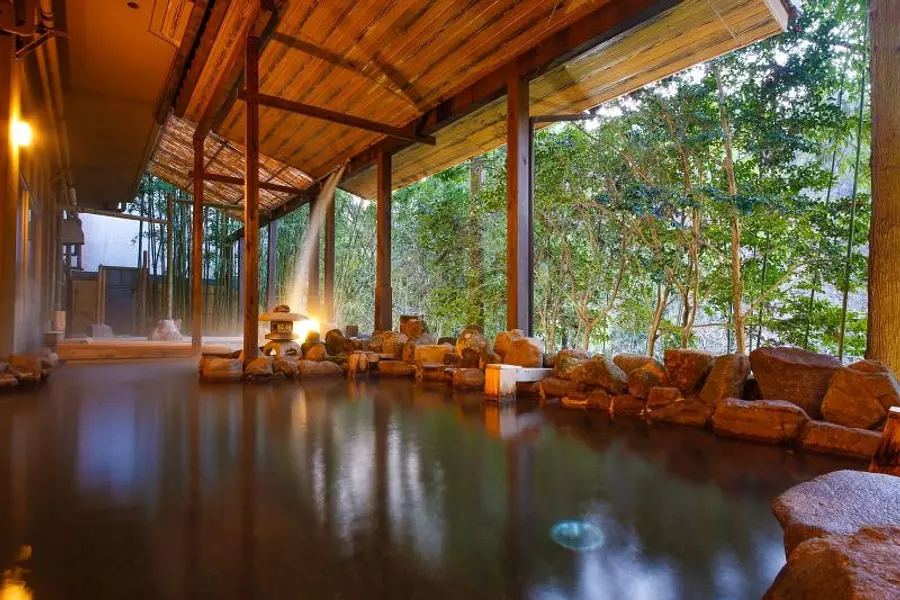
This time's cycling will finish when we return to Misugi Michi-no-eki about 1.5km from Azumaya.
Don't you want to feel refreshed after a fun run?
So, following the previous Inabe edition, we will introduce Shime hot springs this time as well! That hot spring is MisugiResort!
MisugiResort has Hinotani Onsen, which you can also take a day trip to.
There is a large public bath, an open-air bath, a cold bath, and a cold bath, making it the perfect place to relieve the fatigue of cycling and work up a sweat. Staying overnight and enjoying delicious food will definitely make your trip even more fun!
Hinotani Onsen MisugiResort
Address: 5990 Yachi, Misugi-cho TsuCity
Phone number: 059-272-1155
Day trip bath: 1,000 yen (excluding tax) *1,600 yen (excluding tax) in summer
The stars in Misugi can be seen beautifully at night, so we recommend enjoying stargazing.
Misugi is a place where you can enjoy not only cycling, but also touring the post towns along the highway and bathing in the forest. If you haven't run yet, please come and run!
[This route]
Article creation / Masanori Asano
ーーーーーーーーーーーーーーーー
◎ Bicycle writer goes! Beautiful country of Mie: Bicycle route notes
・ [Matsuzaka Edition] Relaxing cycling to enjoy Matsusaka beef gourmet food!
・ [HigashiKishu Edition] Run along Shichirimihama Beach and enjoy the delicious food of Kumano!
・ [Shima Edition] Cycling along the seaside, visiting lucky charms and gourmet food!
・ [Eastern Iga Edition] Hill climb and gourmet food in a hilly mountain village
| Category | |
|---|---|
| season | |
| area |


